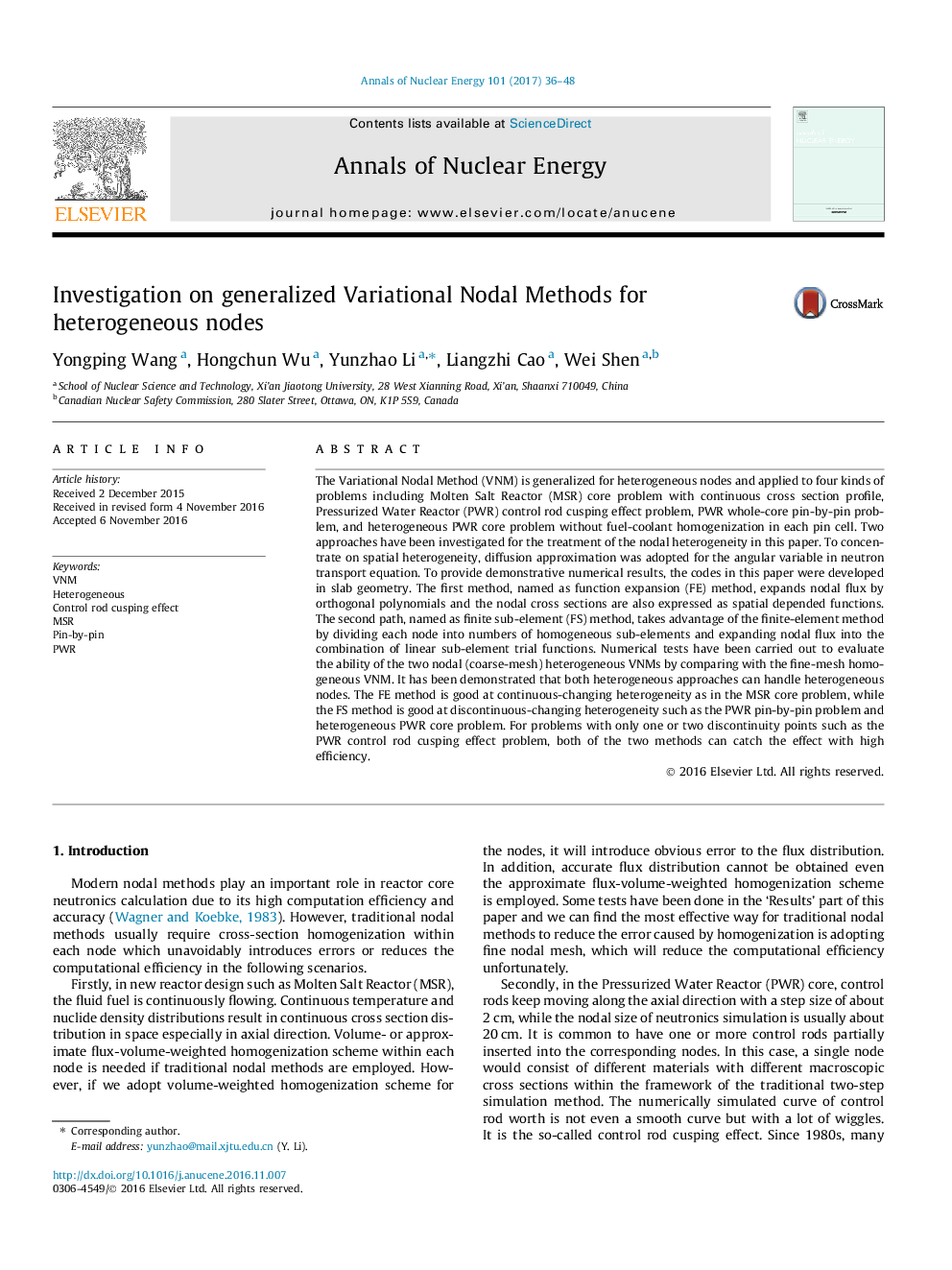| کد مقاله | کد نشریه | سال انتشار | مقاله انگلیسی | نسخه تمام متن |
|---|---|---|---|---|
| 5474847 | 1521095 | 2017 | 13 صفحه PDF | دانلود رایگان |
عنوان انگلیسی مقاله ISI
Investigation on generalized Variational Nodal Methods for heterogeneous nodes
ترجمه فارسی عنوان
بررسی روشهای عمومی نوشتاری برای گره های ناهمگن
دانلود مقاله + سفارش ترجمه
دانلود مقاله ISI انگلیسی
رایگان برای ایرانیان
کلمات کلیدی
موضوعات مرتبط
مهندسی و علوم پایه
مهندسی انرژی
مهندسی انرژی و فناوری های برق
چکیده انگلیسی
The Variational Nodal Method (VNM) is generalized for heterogeneous nodes and applied to four kinds of problems including Molten Salt Reactor (MSR) core problem with continuous cross section profile, Pressurized Water Reactor (PWR) control rod cusping effect problem, PWR whole-core pin-by-pin problem, and heterogeneous PWR core problem without fuel-coolant homogenization in each pin cell. Two approaches have been investigated for the treatment of the nodal heterogeneity in this paper. To concentrate on spatial heterogeneity, diffusion approximation was adopted for the angular variable in neutron transport equation. To provide demonstrative numerical results, the codes in this paper were developed in slab geometry. The first method, named as function expansion (FE) method, expands nodal flux by orthogonal polynomials and the nodal cross sections are also expressed as spatial depended functions. The second path, named as finite sub-element (FS) method, takes advantage of the finite-element method by dividing each node into numbers of homogeneous sub-elements and expanding nodal flux into the combination of linear sub-element trial functions. Numerical tests have been carried out to evaluate the ability of the two nodal (coarse-mesh) heterogeneous VNMs by comparing with the fine-mesh homogeneous VNM. It has been demonstrated that both heterogeneous approaches can handle heterogeneous nodes. The FE method is good at continuous-changing heterogeneity as in the MSR core problem, while the FS method is good at discontinuous-changing heterogeneity such as the PWR pin-by-pin problem and heterogeneous PWR core problem. For problems with only one or two discontinuity points such as the PWR control rod cusping effect problem, both of the two methods can catch the effect with high efficiency.
ناشر
Database: Elsevier - ScienceDirect (ساینس دایرکت)
Journal: Annals of Nuclear Energy - Volume 101, March 2017, Pages 36-48
Journal: Annals of Nuclear Energy - Volume 101, March 2017, Pages 36-48
نویسندگان
Yongping Wang, Hongchun Wu, Yunzhao Li, Liangzhi Cao, Wei Shen,
